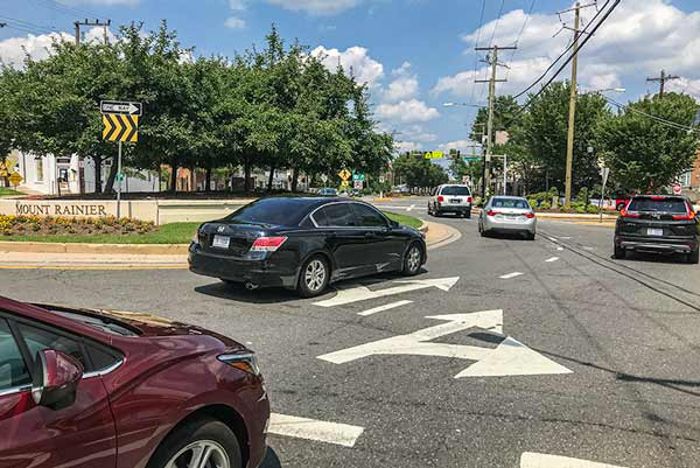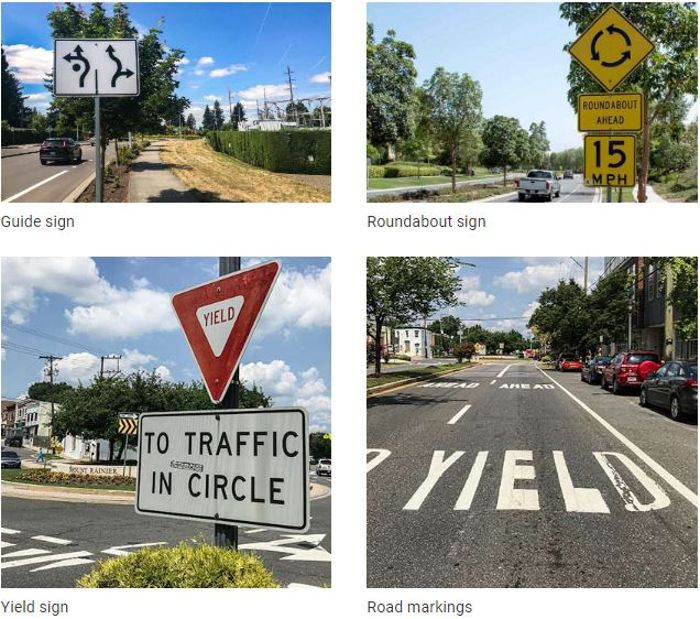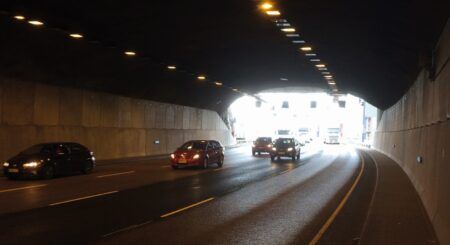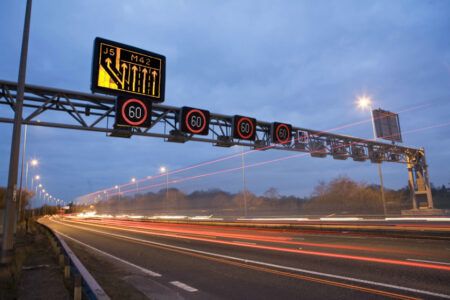Researchers from the USA’s Insurance Institute for Highway Safety (IIHS) have found that crashes at two-lane roundabouts fall over time as drivers gain familiarity with them.
Widely-deployed across Europe and increasingly popular for use in the USA, roundabouts improve safety over traditional intersections, but the benefits of two-lane roundabouts have been less clear than those of single-lane roundabouts. Also known as ‘traffic circles’, roundabouts force drivers to slow down and all but eliminate the most severe types of intersection crashes: right-angle, left-turn and head-on collisions. Single-lane roundabouts see fewer total crashes of any type. However, adding another lane makes roundabouts more complex, creating more potential conflicts.

Some studies have found smaller benefits when intersections with stop signs or traffic signals are converted to two-lane roundabouts than when they are converted to single-lane roundabouts. One 2012 study found that crashes actually increase after such conversions. IIHS researchers decided to look at how crash trends at both single- and two-lane roundabouts change over time, as drivers gain familiarity with them. They focused on Washington State, which now has more than 300 roundabouts.
The study involved 98 single-lane and 29 two-lane roundabouts built between 2009 and 2015. For each roundabout, researchers looked at crashes beginning with the first full calendar year after completion and ending with 2016. Thus, older roundabouts had more years of data. To account for the effects of the economy and traffic volumes on crashes, the analysis included the unemployment rate and annual vehicle miles traveled (VMT) in the in the area where each roundabout was located.
The number of crashes at two-lane roundabouts decreased on average 9% per year. At the same time, the odds that a crash at a two-lane roundabout involved an evident or incapacitating injury decreased by nearly one-third annually. The number of crashes increased on average 7% at single-lane roundabouts, and the odds of an injury fell 19% annually, but those changes were not statistically significant. It is not clear how long the crash reductions would be expected to continue, as the longest period analyzed for any of the roundabouts was seven years.

“Two-lane roundabouts are inherently more complex than the single-lane type,” said the study’s lead author, IIHS senior research transportation engineer, Wen Hu,. “Even in a place like Washington, many drivers still aren’t familiar with them, so it makes sense that there would be more crashes when a roundabout is first built than after it has been in place for a while.”
A common problem at roundabouts is failing to yield the right-of-way. The odds that a crash at a two-lane roundabout involved that type of error fell 11% annually. Meanwhile, the results suggest drivers learned to go slower at single-lane roundabouts. The researchers found a 19% decrease in the odds that a single-lane roundabout crash was speed-related. As the authors point out, however, traffic engineers should not rely on drivers to learn how to navigate roundabouts on their own, as better design could help them navigate a roundabout safely the first time they encounter it.





